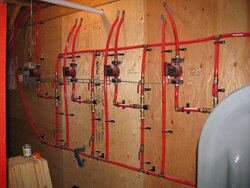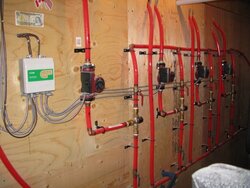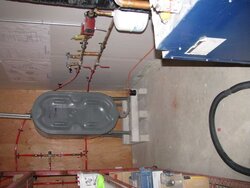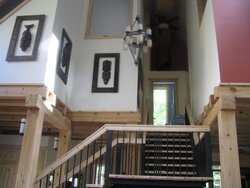I am installing an EKO 40 in a boiler shed aprox 140 feet from the house and need to run pex lines to the existing heating system. I am installing them in a foamed in place trench frames by 2" foam insulation. I have been absorbing vast amounts of info on this site from all of the people here who either know what they are talking about or have learned from trial and error. To both of these groups I owe a dept of gratitude for saving me alot of time, money and frustration. I was planning on using 1 1/4 inch pex (w/ oxygen barrier) underground and was about order to a three hundred foot roll from PexSupply and noticed that 3/4 inch is substantially cheaper. Is it alright to use two runs of 3/4" instead of 1 run of 1 1/4? To my mind it works out to more capacity and would be about the same once you factor in fittings and restriction. (not that i've done the math!)
Am I wrong or would this work? Even when you add the extra fittings and parts it is alot cheaper.
Thanks for any thoughts
By the way I almost puked when I figured out the cost for copper to plumb my system so decided to use 1" pex instead for my secondary loop (primary is 1 1/4 copper) I looked at alot of systems and never saw one like this so hopefully it works. If any one has done this let me know. Also any criticism is appreciated, I would rather know now before it gets cold.
"Thats alot of space to heat!"
Am I wrong or would this work? Even when you add the extra fittings and parts it is alot cheaper.
Thanks for any thoughts
By the way I almost puked when I figured out the cost for copper to plumb my system so decided to use 1" pex instead for my secondary loop (primary is 1 1/4 copper) I looked at alot of systems and never saw one like this so hopefully it works. If any one has done this let me know. Also any criticism is appreciated, I would rather know now before it gets cold.
"Thats alot of space to heat!"






